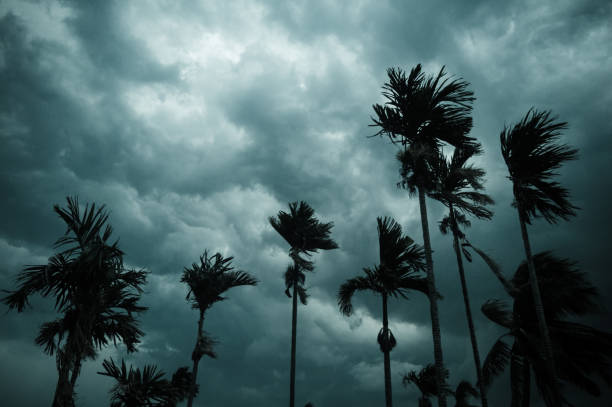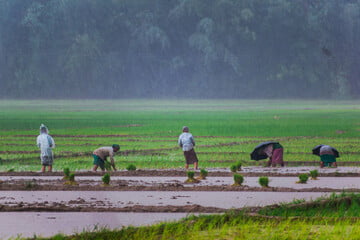India has monsoon type climate, which means country experiences distinct wet season and dry season. The monsoon winds are responsible for bringing the rain to India, and they are caused by the differential heating of land and water.
What is a Monsoon?
The word “monsoon” comes from Arabic word “mausim,” which means “season.” Monsoon is a seasonal wind that changes direction twice a year. In India, the monsoon winds blow from the southwest during the summer and from the northeast during the winter. In India, the monsoon winds bring rain from the Indian Ocean to the subcontinent.

Tibetan Plateau
Tibetan Plateau is high-altitude region that lies to the north of India. Plateau acts as a barrier to the cold winds from Central Asia, which helps to keep the Indian subcontinent warmer. This is important for the monsoons, as they need warm air to rise and bring rain.
Why Does India Have a Monsoon Climate?
There are several reasons why India has a monsoon type of climate. These include:
- The location of India. India is located in the tropical region, which means that it is hot and humid all year round. The monsoon winds help to moderate the climate and bring much-needed rain to the country.
- The Himalayas. The Himalayas play a major role in the monsoon winds. The mountains block the cold winds from Central Asia, which allows the warm, moist winds from the Indian Ocean to reach the subcontinent.
- The Inter-Tropical Convergence Zone (ITCZ). The ITCZ is a belt of low pressure that lies near the equator. The ITCZ moves north and south with the seasons, and it is responsible for bringing the monsoon rains to India.
- The Indian Ocean. The Indian Ocean is a large body of water, and it heats up more slowly than the land. This means that the monsoon winds pick up more moisture from the ocean, which results in heavy rainfall in India.
The Intertropical Convergence Zone (ITCZ)
ITCZ is a belt of low pressure that lies near the equator. ITCZ moves north and south with the seasons, and it is responsible for bringing the monsoon rains to India.
The Monsoon Seasons in India
There are two monsoon seasons in India: Summer Monsoon and Winter Monsoon.
- Summer Monsoon is the wet season in India. It usually starts in June and ends in September. During this time, monsoon winds bring heavy rain to the subcontinent. Summer Monsoon is responsible for about 80% of the annual rainfall in India.
- Winter Monsoon is the dry season in India. It usually starts in October and ends in March. During this time, Monsoon winds blow from the north to the south. Winter Monsoon brings little rain to India.

The Impact of the Monsoon on India
Monsoon have a major impact on India’s climate and economy. They are responsible for the country’s lush vegetation and agricultural productivity. Monsoon also provide water for drinking and irrigation. However, Monsoon can also be destructive, causing flooding and landslides in India.
- How To Earn Money From Linkedin Followers
- Real Ways to Make Money from Home for Free
- How to Earn Money from Instagram through Post
- How to Earn Money from Google Play Store: Monetize Your Apps
- Online Work And Earn Money Daily: 6 Work From Home Jobs
El nino-La nina
El Niño-La Niña cycle is a natural climate pattern that affects Monsoons in India. During El Niño years, Monsoons are weaker than usual. During La Niña years, Monsoons are stronger than usual.
Economic Benefits of the Monsoons
Monsoon are essential for India’s economy. They provide quality water needed for irrigation and for growing crops in agriculture. Monsoon also help to regulate the country’s temperature and humidity. This makes it more comfortable for people to work and live in India.
The Science Behind Sleep Music and Why It Works — Learn More
Conclusion : India’s monsoon climate is a complex phenomenon that is influenced by many factors. However, three main factors of location, topography, and seasonal reversal of winds are the most important. Monsoons are essential for India’s agriculture and economy, and they play a major role in country’s climate.



